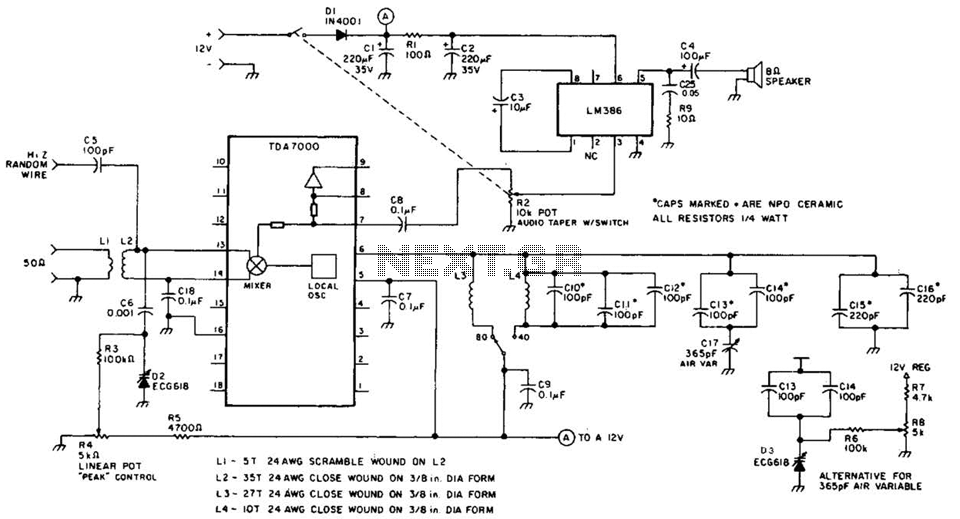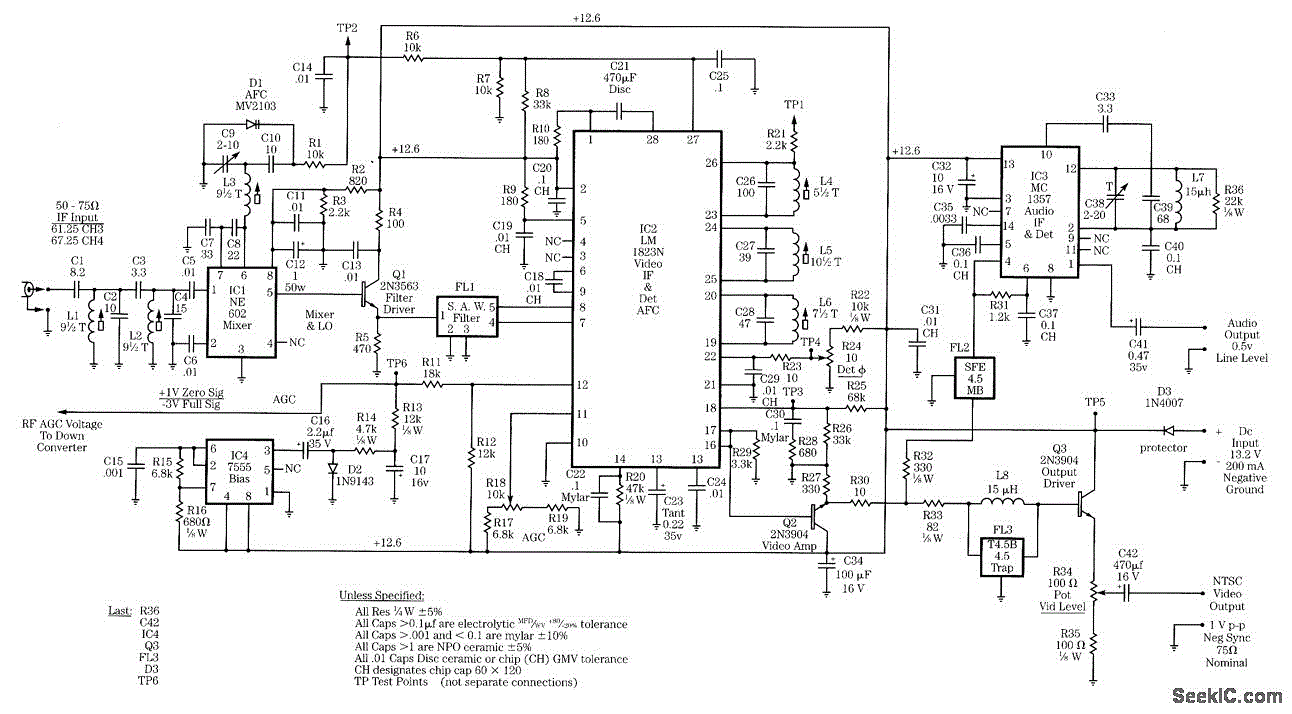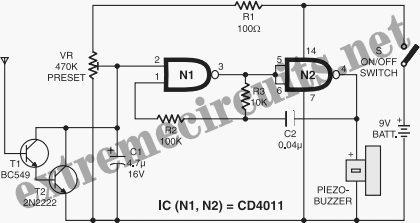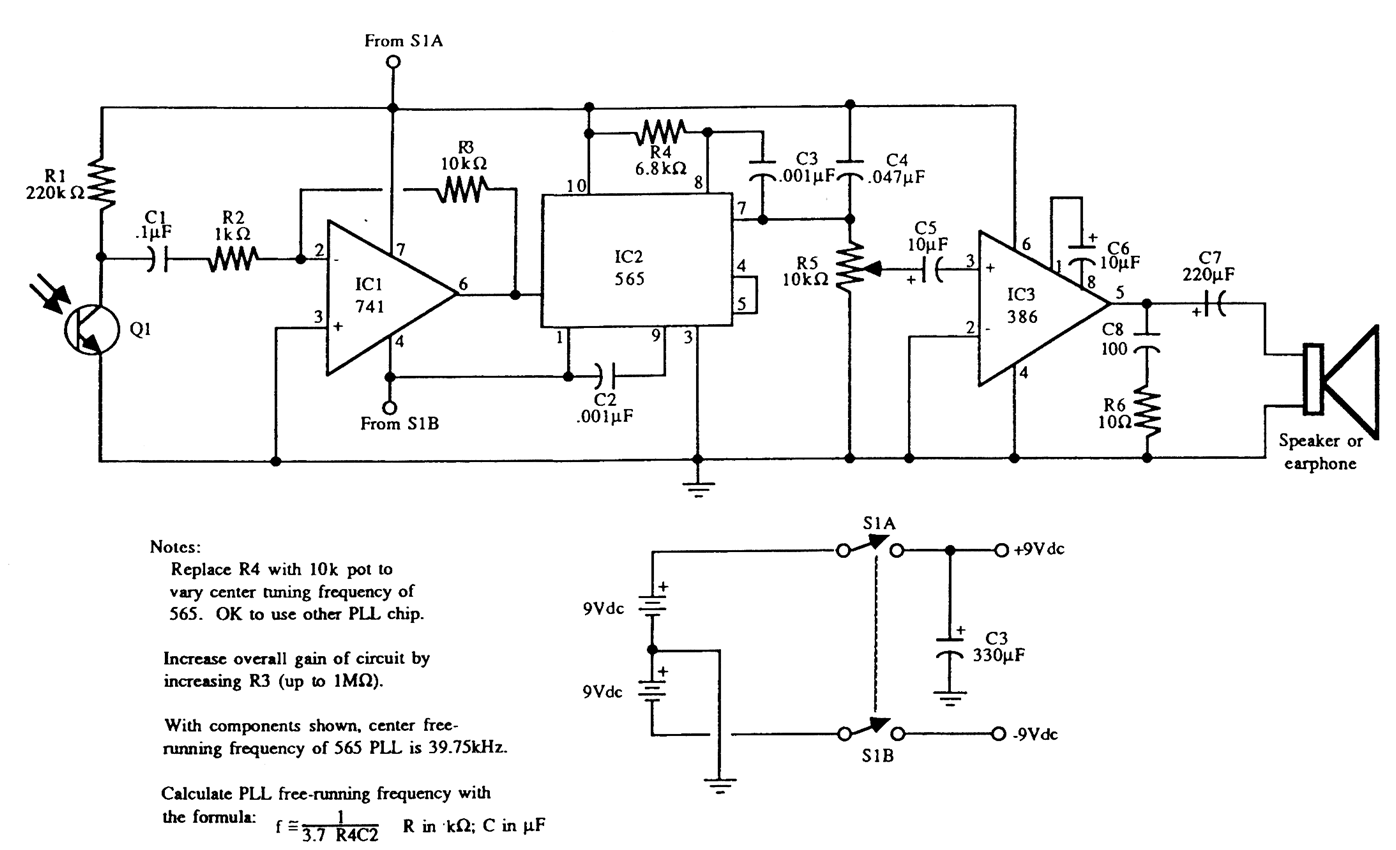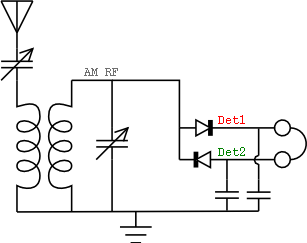
Receiver monitor
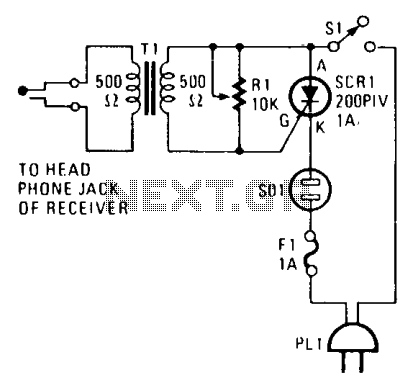
The alarm connects to the earphone jack on a receiver. When a signal, typically sent to the headphones, is detected and applied to the gate of SCR1, it conducts, activating the alarm connected to SOI. The signaling device can be either an audible alarm or a lamp. A variable resistor R1 serves as a sensitivity control to prevent background noises from triggering the alarm.
The circuit operates by utilizing a silicon-controlled rectifier (SCR) as the primary switching element. The SCR, designated as SCR1, is triggered by a specific audio signal that is normally directed to headphones. This setup allows the circuit to monitor the audio signal actively. When the designated signal is detected, it is fed to the gate of SCR1, causing it to enter a conductive state. Once activated, SCR1 completes the circuit to the signaling device, which can be configured as either an audible alarm (such as a buzzer or speaker) or a visual indicator (such as an LED lamp).
The inclusion of the variable resistor R1 is critical for fine-tuning the sensitivity of the circuit. By adjusting R1, the user can set a threshold that determines how sensitive the alarm is to environmental sounds. This prevents nuisance alarms caused by background noise, ensuring that only significant audio signals trigger the alarm.
In terms of connectivity, the circuit is designed to plug directly into the earphone jack of the receiver, making it easy to integrate with existing audio equipment. The output from SCR1 can be connected to various types of alarms depending on the application requirements.
Overall, this design offers a flexible and effective solution for monitoring audio signals and providing alerts while minimizing false triggers from ambient noise.The alarm plugs into the earphone jack on a receiver. Then when a signal (normally fed to the headphones) is detected and applied to the gate of SCR1, it conducts, sounding whatever alarm is connected to SOI. The signaling device can be an audible alarm or a lamp. Variable resistor Rl functions as a sensitivity control so that background noises won't trigger the alarm. 🔗 External reference
The circuit operates by utilizing a silicon-controlled rectifier (SCR) as the primary switching element. The SCR, designated as SCR1, is triggered by a specific audio signal that is normally directed to headphones. This setup allows the circuit to monitor the audio signal actively. When the designated signal is detected, it is fed to the gate of SCR1, causing it to enter a conductive state. Once activated, SCR1 completes the circuit to the signaling device, which can be configured as either an audible alarm (such as a buzzer or speaker) or a visual indicator (such as an LED lamp).
The inclusion of the variable resistor R1 is critical for fine-tuning the sensitivity of the circuit. By adjusting R1, the user can set a threshold that determines how sensitive the alarm is to environmental sounds. This prevents nuisance alarms caused by background noise, ensuring that only significant audio signals trigger the alarm.
In terms of connectivity, the circuit is designed to plug directly into the earphone jack of the receiver, making it easy to integrate with existing audio equipment. The output from SCR1 can be connected to various types of alarms depending on the application requirements.
Overall, this design offers a flexible and effective solution for monitoring audio signals and providing alerts while minimizing false triggers from ambient noise.The alarm plugs into the earphone jack on a receiver. Then when a signal (normally fed to the headphones) is detected and applied to the gate of SCR1, it conducts, sounding whatever alarm is connected to SOI. The signaling device can be an audible alarm or a lamp. Variable resistor Rl functions as a sensitivity control so that background noises won't trigger the alarm. 🔗 External reference
Warning: include(partials/cookie-banner.php): Failed to open stream: Permission denied in /var/www/html/nextgr/view-circuit.php on line 713
Warning: include(): Failed opening 'partials/cookie-banner.php' for inclusion (include_path='.:/usr/share/php') in /var/www/html/nextgr/view-circuit.php on line 713
